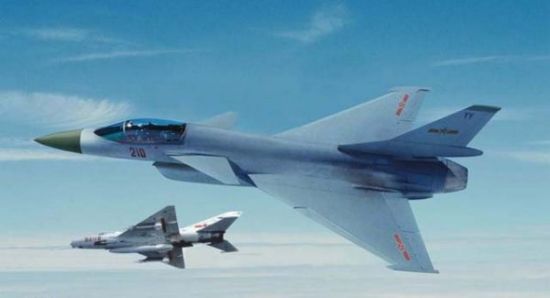主题:【贴图】送老萨一些土八路装备。中国陆海空三军武器大展览zt 坦克篇 -- 梦晓半生
- 共: 💬 145
The Lavi (young lion) program began in the late 1970s when IAI agreed to develop a new multi-role fighter to replace Israel's aging A-4 Skyhawk and Kfir combat aircraft. Seeing a need for some 300 aircraft, including 60 two-seat combat-capable trainers, the Lavi was envisioned primarily as a close air support and tactical attack platform with a secondary air superiority capability. Although Israel successfully obtained significant development funds from the United States, all design work was done in Israel with the only major subcontracts going to Pratt & Whitney to develop the engine and to Grumman to assist in design and manufacture of the composite wing. The resulting design, similar to the F-16 though slightly smaller and lighter, featured a delta wing and canards with a fly-by-wire control system allowing superb maneuverability. IAI also incorporated an advanced set of avionics systems including glass-cockpit displays, a helmet-mounted targeting system, a heads-up display (HUD), and a multi-mode pulse-Doppler radar. One unique aspect of the design was the decision to develop the two-seater variant first and use the additional space of the backseat for avionics and systems in the one-seater. Though the Lavi appeared to be progressing well with two prototypes having completed over 80 flights, political and economic factors began to take their toll on the project. The US had supplied some 40% of the development costs of the new fighter, but refused to allow export licenses for certain pieces of technology. As a result, unit cost began to spiral beyond what the US or Israel had anticipated. In addition, the capabilites of the Lavi were becoming increasingly similar to the F-16, and the US Congress feared the Lavi would interfere with export sales of the American fighter. Thus, Congress withdrew all future funds for Lavi development, and realizing they could not proceed without this support, the Israeli government was forced to cancel the Lavi in August 1987. Of the five prototypes then completed or under construction, three were sold for scrap and one was given to a museum. However, the third prototype, B-03, was completed using IAI funds as a two-seat technology demonstrator with a complete fit of advanced avionics. The Lavi TD was used for marketing until the mid-1990s when it was converted into a non-flyable ground test vehicle. The marketing project did find significant success in China, and IAI has provided assistance to Chengdu in developing the very similar (and perhaps identical) J-10.

- 相关回复 上下关系8
更老的歼击机 懒虫123 字74 2004-09-02 17:29:20
现代战斗机篇 (2) 梦晓半生 字1849 2004-09-02 17:22:03
狮式战斗机-Lavi 懒虫123 字1057 2004-09-02 18:31:45
【文摘】狮式 和 歼10

期待的终於出场了 - 比较现代的战斗机篇 (1) 梦晓半生 字1105 2004-09-02 17:13:43
也贴两个传说中的机型。 梦晓半生 字546 2004-09-02 17:07:56
凑热闹 轰-6 懒虫123 字2368 2004-09-02 16:58:02
轰-5 懒虫123 字2260 2004-09-02 17:02:17